
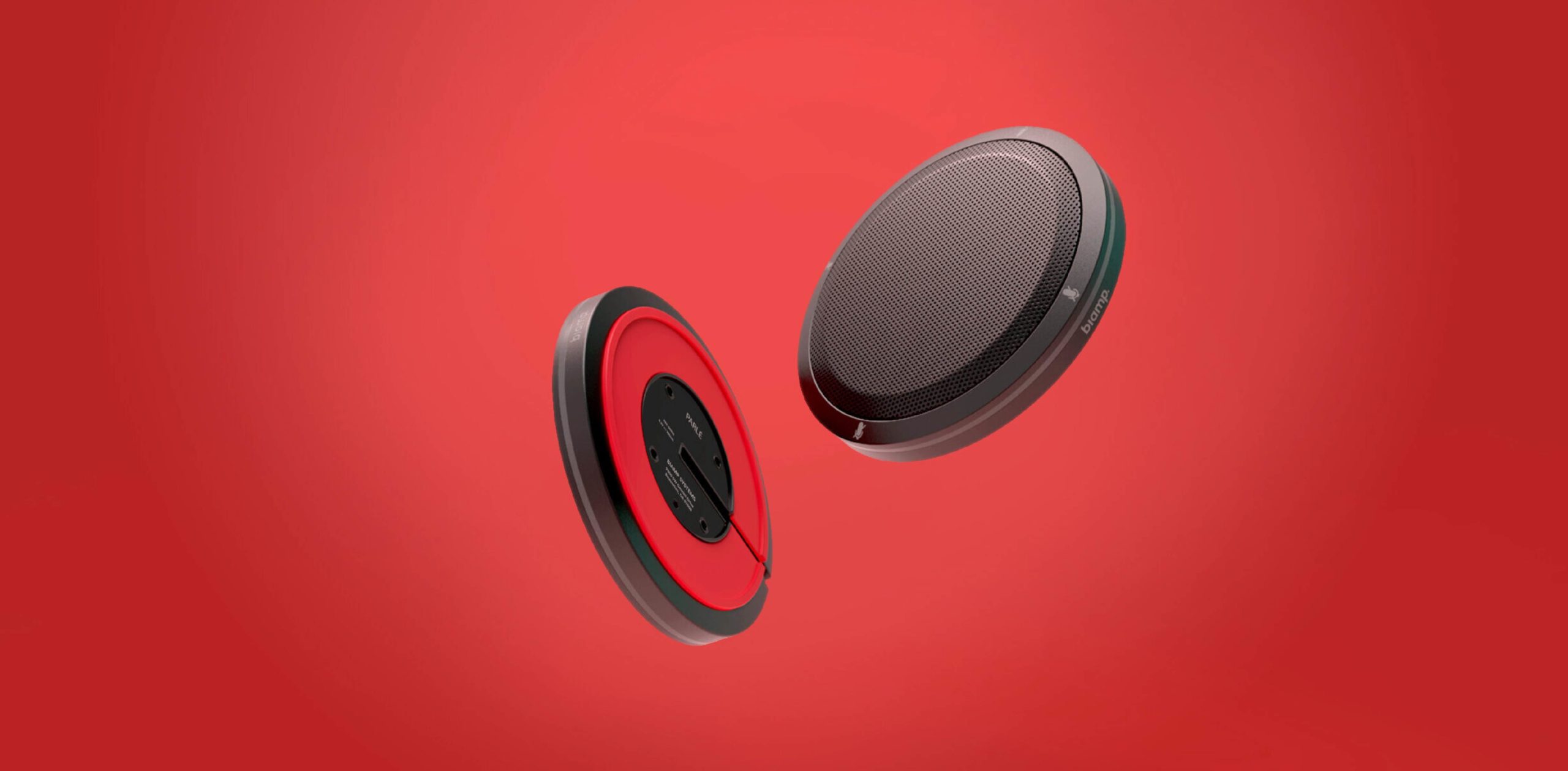
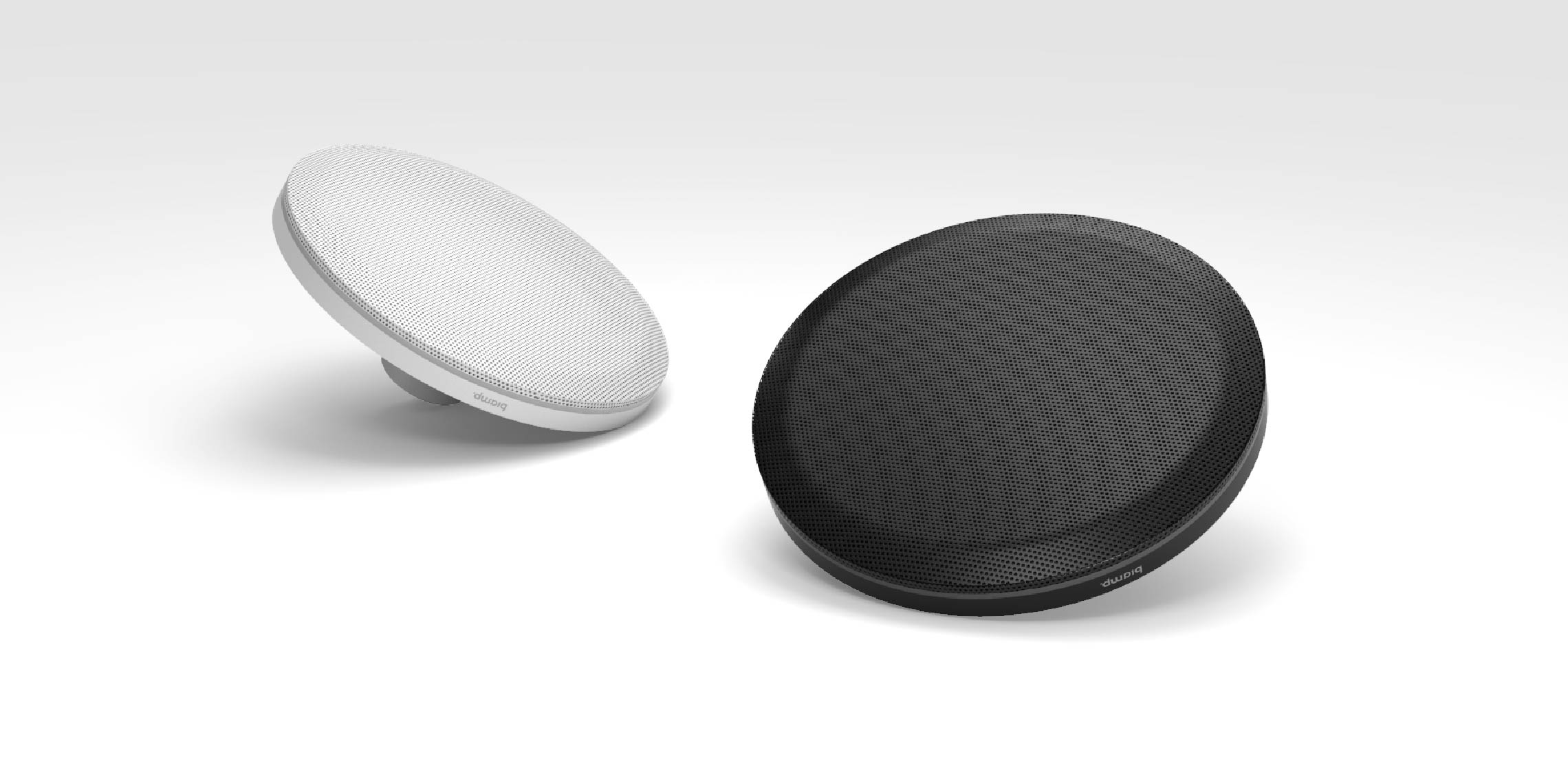


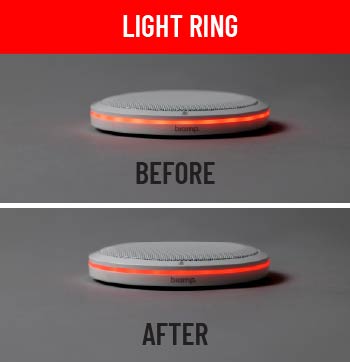
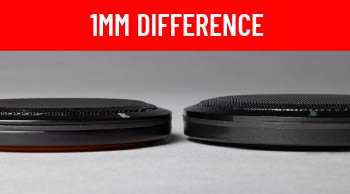
The R&D team at Biamp had developed a new technology for a tabletop conference room microphone. Using four concentrated beam mics positioned in 90º “zones” and a processing algorithm that minimized signal loss, the device created a full 360º range that could capture a speaker’s voice as they moved anywhere in a room.
The engineering group had a layout for the tech and were working on the DSP. Their prototype required a PCB with a minimum 140mm diameter. At the time, the leading product on the market had an overall diameter of just 120mm. The team made several mockups at various sizes, but none were small enough to convey that this was a simple, elegant solution with state-of-the-art tech.
Then one day, as we were tinkering with something else entirely, we caught a glimpse of an array on a presentation. We drew a circle around it, and it measured 90mm.
We backpedaled a bit, saying we needed to make it smaller than 140mm, with 90mm – 100mm being ideal. And then we went back to the CEO.
From there, we brought together Biamp’s engineers and confronted the issue. “What are the tradeoffs required to get this product from 140mm diameter to 90mm,” we asked.
The team had never been asked that kind of question. In the past, Marketing would sell whatever Engineering said was feasible. Now, the word “No” wasn’t an option.
In our experience, it’s not the place of Engineering to say, “No.” Instead, it’s their role to advise on how long something will take and how much it will cost—so that the decision-makers can align the process and the output with the business objectives.
Even with an approved design, the Biamp team faced new challenges. The concept called for a 360º band of LED light around the perimeter of the case. Not only did we have to solve for light bleeding through the speaker grille, but we also had to think creatively about how to power 12 LEDs and evenly diffuse the light to create the desired effect of a continuous “glow”.
The solution actually involved using more LEDs at only 30% power—using a PWM to fool the eye and conserve even more energy. We weren’t the electrical engineers on the project, but we still had to think that way to get to the best possible result.
The ultimate test—and the ultimate opportunity—came when Biamp’s lead M.E. left the company. We proposed integrating our teams so we could address issues quickly and efficiently.
It was an excellent checks-and-balances system that gave us the freedom to pursue the idea—and made us accountable for getting it right.
Design Leadership
Industrial Design
Engineering
Manufacturing
| Cookie | Duration | Description |
|---|---|---|
| cookielawinfo-checkbox-analytics | 11 months | This cookie is set by GDPR Cookie Consent plugin. The cookie is used to store the user consent for the cookies in the category "Analytics". |
| cookielawinfo-checkbox-functional | 11 months | The cookie is set by GDPR cookie consent to record the user consent for the cookies in the category "Functional". |
| cookielawinfo-checkbox-necessary | 11 months | This cookie is set by GDPR Cookie Consent plugin. The cookies is used to store the user consent for the cookies in the category "Necessary". |
| cookielawinfo-checkbox-others | 11 months | This cookie is set by GDPR Cookie Consent plugin. The cookie is used to store the user consent for the cookies in the category "Other. |
| cookielawinfo-checkbox-performance | 11 months | This cookie is set by GDPR Cookie Consent plugin. The cookie is used to store the user consent for the cookies in the category "Performance". |
| viewed_cookie_policy | 11 months | The cookie is set by the GDPR Cookie Consent plugin and is used to store whether or not user has consented to the use of cookies. It does not store any personal data. |
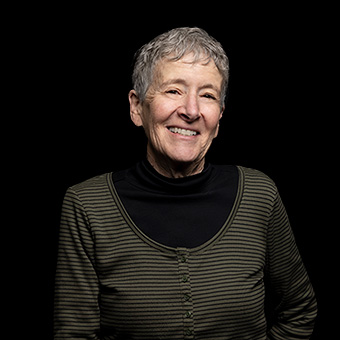
Anne likes things neat and tidy. As an avid gardener, she knows a pristine landscape doesn’t happen by chance—there’s always someone pruning, watering, and tending to the details. Anne is that person for IDM. “I shape things,” she says, “often behind the scenes, to make sure we deliver what we promise.”
At IDM, Anne works to “make excellence a habit” by overseeing our ISO certification program. She also helps cultivate a culture focused on customer satisfaction—whether that “customer” is internal or external. With her self-described “relentless smile” and what Frank Lloyd Wright calls “an unremitting devotion to the things you want to see happen,” Anne keeps us alert, on our toes, and bringing our very best each day. “I love working with bright people who are passionate about what they do,” she says.
When she’s not digging in the dirt, you might find Anne nurturing her love of reading at the local library.